Monthly Archives: February 2022
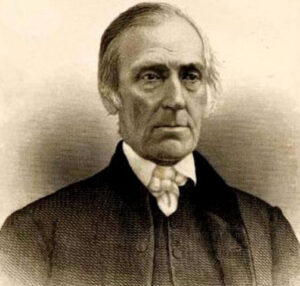
 In any kind of slavery situation, there are always people who are willing to help those who are being held against their will. Just like during the Holocaust, when the slaves were in trouble, people came to their rescue by forming the Underground Railroad. One hero of the Underground Railroad was Levi Coffin. In the winter of 1826-1827, fugitives began to come show up at the Coffin house. It started out as a well-kept secret and just a few slaves came, but the numbers increased as it became more widely known on different routes. These slaves were running away from bondage, beatings, and limitless working hours. Their lives were little better than death, and they knew they had to escape or die.
In any kind of slavery situation, there are always people who are willing to help those who are being held against their will. Just like during the Holocaust, when the slaves were in trouble, people came to their rescue by forming the Underground Railroad. One hero of the Underground Railroad was Levi Coffin. In the winter of 1826-1827, fugitives began to come show up at the Coffin house. It started out as a well-kept secret and just a few slaves came, but the numbers increased as it became more widely known on different routes. These slaves were running away from bondage, beatings, and limitless working hours. Their lives were little better than death, and they knew they had to escape or die.
When they arrived at the Coffin house, they were welcomed in and given shelter, they would usually sleep during the day, and then they were quickly forwarded safely on their journey. Neighbors who had been too fearful of the penalty of the law to help at first, saw how well the Underground Railroad was being run and soon they felt encouraged to help. A big part of the change of attitude came from the fearless manner in which Levi Coffin acted and the success his efforts produced. The neighbors began to contribute clothing the fugitives and aid in forwarding them on their way. They were still too afraid to shelter them under their own roof, so that part of the work fell to the Coffin household. There were the “content to watch” people, who obviously wanted to see the work go on…as long as someone else took the risk. And of course, there were those who told Levin Coffin he was wasting his time. They tried to discourage him and dissuade him from running such risks, telling him that they were greatly concerned for my safety and monetary interests. They tried to convince him that continuing this risky business could damage his business and possibly even ruin him. The told him he could be 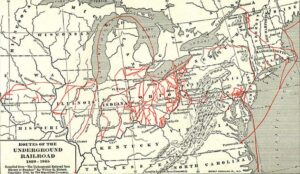 endangering himself and his family too. I suppose it could have, because there are always those who sympathized with the slave-owners, but Levi Coffin could not stand to see the horrible treatment the slaves endured. He had to do something, no matter what it cost him, just like those who helped the Jews during the Holocaust.
endangering himself and his family too. I suppose it could have, because there are always those who sympathized with the slave-owners, but Levi Coffin could not stand to see the horrible treatment the slaves endured. He had to do something, no matter what it cost him, just like those who helped the Jews during the Holocaust.
Levi listened to these “counselors” and then told them that he “felt no condemnation for anything that I had ever done for the fugitive slaves. If, by doing my duty and endeavoring to fulfill the injunctions of the Bible, I injured my business, then let my business go. As to my safety, my life was in the hands of my Divine Master, and I felt that I had his approval. I had no fear of the danger that seemed to threaten my life or my business. If I was faithful to duty and honest and industrious, I felt that I would be preserved and that I could make enough to support my family.”
Even some of those people who were opposed to slavery, felt it was very wrong to harbor fugitive slaves. They figured that the slaves must be guilty of some crime, such as possibly killing their masters or committed some other crime in their escape attempts…making those who helped them an accomplice to the “crime” they were supposedly guilt of. Oh, they had every imaginable objection, and figured it was, at the very least, their duty to make their thoughts known. Once they had voiced their objections, their conscience was clear, and if Levi met with a tragic end, they could at least say, “I told him!!” Levi, in return asked one such “neighbor’s keeper” neighbor, if he thought the Good Samaritan stopped to inquire whether the man who fell among thieves was guilty of any crime before he attempted to help him? He said, “I asked him if he were to see a stranger who had fallen into the ditch would he not help him out until satisfied that he had committed no atrocious deed?” I suppose it was a “crime” to escape their masters, but then some laws should not be laws, and slavery certainly falls into that category. Levi Coffin had to follow his spirit and do what he felt God would expect of him, and in 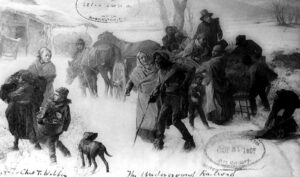 the end, he saved many lives.
the end, he saved many lives.
Many of Levi’s pro-slavery customers left him for a time, and sales were down. For while his business struggled, but Levi knew that he was doing God’s will, and so God would take care of him and his business. Before long, new customers replaced those who had left him. New settlements were rapidly forming to the north and Levi’s own was filling up with emigrants from North Carolina and other States. His trade increased and his business grew. He says of this time in his life, “I was blessed in all my efforts and succeeded beyond my expectations.”
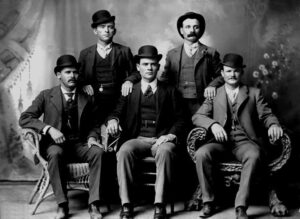 The American cowboy hat. Anyone who knows anything about the Old West knows about the Stetson cowboy hat, and every great cowboy wore them, right? Wrong. The truth is that in the Old West, most men wore a Derby hat. If you’ve seen the movie, Butch Cassidy and the Sundance Kid, then you have seen a more realistic picture of the Old West.
The American cowboy hat. Anyone who knows anything about the Old West knows about the Stetson cowboy hat, and every great cowboy wore them, right? Wrong. The truth is that in the Old West, most men wore a Derby hat. If you’ve seen the movie, Butch Cassidy and the Sundance Kid, then you have seen a more realistic picture of the Old West.
The myth of the cowboy hat did come about from the hat that was created by John Stetson, and while it was a classic, it didn’t actually come into play until the very end of the 19th century, not the early part like most people think. The Stetson cowboy hat was first introduced in 1865, but it just didn’t take off like John Stetson had hoped. The cowboy hat was based somewhat on a Spanish design, and thr rumor was that a random cowboy saw Stetson’s at and paid him $5.00 for it. After that, it was said to be all the rage.
The truth is vastly different. I don’t know if a cowboy bought that first cowboy hat for $5.00 or not, but while we think that the Derby hat or the top hat were only worn by the bankers, businessmen, or the very rich, that belief is wrong. The early cowboys liked the derby hat best, and those who did not like the Derby usually wore a top hat or a hat associated with their professions, like a conductors cap. The Derby was also known as the Bowler hat, with many notorious cowboy criminals such as Butch Cassidy and Will Carver wearing them. Even those who weren’t criminals liked the Derby hat on the frontier, because they stayed on in windy conditions and protected the cowboys from the sand. I think anyone who has ever had a hat or cap blow off in the wind can relate 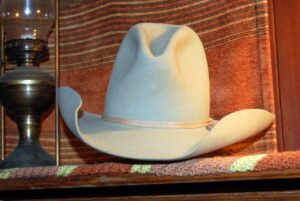
 to that.
to that.
While most cowboys today, and even those who just like “all things country” prefer the cowboy hat these days, and the manufacture of cowboy hats is big business these days, they certainly didn’t start out that way. It’s hard for me to picture cowboys in a Derby hat, but history would prove that the Derby hat was, in fact, what they wore.

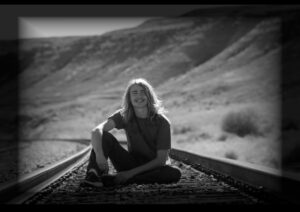 My grandnephew, Easton Moore is very excited for his upcoming high school graduation. I think that whether a kid likes school or not, as they near the end of their public-school days, they are just ready to have it over with. This last semester is notoriously the hardest one, because the student really has “short-timers disease” for lack of a better term. Thirteen years of public school is a lot, and that’s if they didn’t go to pre-school, which most kids do these days. Thankfully for Easton, this last semester is a very light and easy one. That makes it easier to handle in his final stretch. Easton hasn’t exactly decided what he wants to do concerning college, tech school, or working.
My grandnephew, Easton Moore is very excited for his upcoming high school graduation. I think that whether a kid likes school or not, as they near the end of their public-school days, they are just ready to have it over with. This last semester is notoriously the hardest one, because the student really has “short-timers disease” for lack of a better term. Thirteen years of public school is a lot, and that’s if they didn’t go to pre-school, which most kids do these days. Thankfully for Easton, this last semester is a very light and easy one. That makes it easier to handle in his final stretch. Easton hasn’t exactly decided what he wants to do concerning college, tech school, or working.
He loves working on his Bronco, and it sound to me like he could easily make a career of mechanics and/or auto body repair work. That isn’t surprising, because he comes from a long line of mechanics. He has really 
 been changing things up on his Bronco. He has added new headlights, grill, radio, speakers, door speakers, and that’s just for starters. He has future plans to switch out the interior to black…the roof, flooring, dash, console, door panels, and such. He also wants to add a visor to the outside of the windshield. The back window had been broken while the Bronco was sitting in front of the house, so he replaced that and the trim around it. He is hoping that keeps it from breaking again. He also put in a new back window motor, new ignition lock switch, and fixed a leak in the seam around the front window. He took the running boards and replaced the muffler and the heater core…it was blowing smoke into the cab which made him freak out a bit. I can totally understand that!! The Bronco is an unimpressive light tan color, in Easton’s opinion, so he plans to paint it, and put on different wheels and rims. At Christmas, he even put a string of Christmas lights on the Bronco. It looked pretty fancy driving down the road. His mom, Machelle Moore is sure he will think of a bunch of other fun things to do to it too, because his Bronco has really started something in him that, she believes he will end up having a
been changing things up on his Bronco. He has added new headlights, grill, radio, speakers, door speakers, and that’s just for starters. He has future plans to switch out the interior to black…the roof, flooring, dash, console, door panels, and such. He also wants to add a visor to the outside of the windshield. The back window had been broken while the Bronco was sitting in front of the house, so he replaced that and the trim around it. He is hoping that keeps it from breaking again. He also put in a new back window motor, new ignition lock switch, and fixed a leak in the seam around the front window. He took the running boards and replaced the muffler and the heater core…it was blowing smoke into the cab which made him freak out a bit. I can totally understand that!! The Bronco is an unimpressive light tan color, in Easton’s opinion, so he plans to paint it, and put on different wheels and rims. At Christmas, he even put a string of Christmas lights on the Bronco. It looked pretty fancy driving down the road. His mom, Machelle Moore is sure he will think of a bunch of other fun things to do to it too, because his Bronco has really started something in him that, she believes he will end up having a 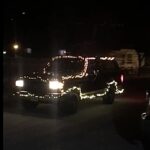
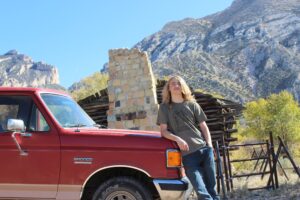 passion to do. He is learning so much about how to do these kinds of things, and he’s not afraid of digging in to figure it out. I’m sure that before long, his Bronco will be a real “chic magnet” and there’s nothing wrong with that.
passion to do. He is learning so much about how to do these kinds of things, and he’s not afraid of digging in to figure it out. I’m sure that before long, his Bronco will be a real “chic magnet” and there’s nothing wrong with that.
It’s going to be a great year for Easton, and he is very excited to see where things go from here. I think he will excel in whatever he decides to do. Today is Easton’s 18th birthday. Happy birthday Easton!! Have a great day!! We love you!!
 Most people have heard of Ludwig van Beethoven, whether they like his music or not. Most people also know that Beethoven was a deaf musician. I think many people think he was born deaf, but that makes no sense. If he had been born deaf, why would he have ever been interested in music? You really don’t desire to play music that you cannot hear. I don’t think that the mind of a child born deaf would simply have no concept of sound…much less music. Of course, these days, more can be done restore hearing than in Beethoven’s time, but even now, I don’t know if hearing could be restored to someone who was completely deaf from birth.
Most people have heard of Ludwig van Beethoven, whether they like his music or not. Most people also know that Beethoven was a deaf musician. I think many people think he was born deaf, but that makes no sense. If he had been born deaf, why would he have ever been interested in music? You really don’t desire to play music that you cannot hear. I don’t think that the mind of a child born deaf would simply have no concept of sound…much less music. Of course, these days, more can be done restore hearing than in Beethoven’s time, but even now, I don’t know if hearing could be restored to someone who was completely deaf from birth.
As a young man, with normal hearing, Beethoven became interested in music, and proved to be a musical genius. His hearing began to go in his 20s, and I have no doubt that it was a devastating event for him. Imagine being a man with a love of music, suddenly realizing that there will come a day when he can no longer hear the music he loves. Beethoven began to try to figure out a way to continue to have the music he loved, and he came up with a way to play the piano and “hear” the way  his music sounded…vibrations. Vibrations, you say!! Yes!! Beethoven began to experiment on what vibrations occurred when each note was placed. I find that amazing. To be able to distinguish between the vibration B-flat makes as opposed to F-sharp. Any musician can easily tell you which note is which, but could they explain the vibration each one makes. I seriously doubt it.
his music sounded…vibrations. Vibrations, you say!! Yes!! Beethoven began to experiment on what vibrations occurred when each note was placed. I find that amazing. To be able to distinguish between the vibration B-flat makes as opposed to F-sharp. Any musician can easily tell you which note is which, but could they explain the vibration each one makes. I seriously doubt it.
Beethoven not only learned to distinguish the vibrations for each note, but he could quickly put them together in an order that made music that was truly beautiful. No sour notes in his music. No, his music was perfection, but exactly how did he do it. Well, he replicated “hearing” using vibrations by attaching a small rod to the piano and biting down on it while he played. Because our eardrums vibrate from sound, the vibration on Beethoven’s jaw imitated hearing while he was hearing impaired. Totally amazing!! This experiment was the start to the official alternate hearing method called bone conduction. And now you know where some of our greatest innovations in hearing came from.

 When we think of language, we think of a way to communicate, but we never really think of…safety. Why would we? After all, language is just communication, and can’t cause violence…can it? Well, it can, and never was that made more obvious than during the early 1800s, when Napoleon Bonapart’s French Army was involved in a war. At night, the soldiers would have a few minutes to read letters from home, but to do so, they had to turn on a lantern. Unfortunately, when the lanterns were turned on, the men became targets. Napoleon needed to find a way to allow his men to receive news from home, while also keeping them safe.
When we think of language, we think of a way to communicate, but we never really think of…safety. Why would we? After all, language is just communication, and can’t cause violence…can it? Well, it can, and never was that made more obvious than during the early 1800s, when Napoleon Bonapart’s French Army was involved in a war. At night, the soldiers would have a few minutes to read letters from home, but to do so, they had to turn on a lantern. Unfortunately, when the lanterns were turned on, the men became targets. Napoleon needed to find a way to allow his men to receive news from home, while also keeping them safe.
That was where a man named Charles Barbier came in. Barbier had served in Napoleon’s French army, and he was the one to develop a unique system known as “night writing” so soldiers could communicate safely during the night. As a military veteran, Barbier saw several soldiers killed because they used lamps after dark to read combat messages. As a result of the light shining from the lamps, enemy combatants knew where the French soldiers were and inevitably led to the loss of many men. The lanterns gave away their positions, and the enemy only had to shoot at the lights.
Barbier, came up with a raised dot system that communicated general words or sounds so the soldiers could effectively communicate necessities at night. It was very similar to modern day Braille, which is what it became when Louis Braille refined it. Braille was blinded at the age of three in one eye as a result of an accident with a stitching awl in his father’s harness making shop. After the accident, his eye became infected and spread to 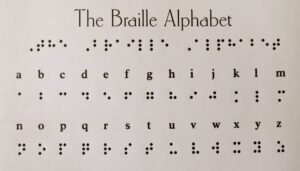
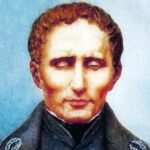 both eyes, resulting in total blindness. The “night writing” system on a raised 12-dot cell, two dots wide and six dots tall, didn’t work well, because while each dot or combination of dots within the cell represented a letter or a phonetic sound, the problem with the military code was that the human fingertip could not feel all the dots with one touch. When Braille refined it, it was very different, but it worked better, and that has become the well-known system we have today.
both eyes, resulting in total blindness. The “night writing” system on a raised 12-dot cell, two dots wide and six dots tall, didn’t work well, because while each dot or combination of dots within the cell represented a letter or a phonetic sound, the problem with the military code was that the human fingertip could not feel all the dots with one touch. When Braille refined it, it was very different, but it worked better, and that has become the well-known system we have today.
 Over the years, we have gotten used to seeing offshore drilling rigs in the oceans surrounding our country, and other countries too, I’m sure. Generally, these rigs are safe places to work, but it’s hard to guarantee safety in some of the fierce storms that occur around the globe. Ocean Ranger was a semi-submersible mobile offshore drilling unit that was located 166 miles east of Saint John’s, Newfoundland. Ocean Ranger was designed and owned by Ocean Drilling and Exploration Company Inc (ODECO) of New Orleans. Ocean Ranger was actually a self-propelled large semi-submersible vessel, designed with a drilling facility and living quarters. It was capable of operation beneath 1,500 feet of ocean water and could drill to a maximum depth of 25,000 feet. At the time of its launch, it was described by ODECO as the world’s largest semi-submersible oil rig to date.
Over the years, we have gotten used to seeing offshore drilling rigs in the oceans surrounding our country, and other countries too, I’m sure. Generally, these rigs are safe places to work, but it’s hard to guarantee safety in some of the fierce storms that occur around the globe. Ocean Ranger was a semi-submersible mobile offshore drilling unit that was located 166 miles east of Saint John’s, Newfoundland. Ocean Ranger was designed and owned by Ocean Drilling and Exploration Company Inc (ODECO) of New Orleans. Ocean Ranger was actually a self-propelled large semi-submersible vessel, designed with a drilling facility and living quarters. It was capable of operation beneath 1,500 feet of ocean water and could drill to a maximum depth of 25,000 feet. At the time of its launch, it was described by ODECO as the world’s largest semi-submersible oil rig to date.
Ocean Ranger was constructed for ODECO in 1976 by Mitsubishi Heavy Industries in Hiroshima, Japan. It was 396 feet long, 262 feet wide, and 337 feet high. It had twelve 45,000-pound anchors. The weight was 25,000 tons. It was floating on two 400-foot-long pontoons that rested 79 feet below the surface. It was massive and very impressive, and it was approved for “unrestricted ocean operations.” Prior to moving to the Grand Banks area in November 1980, it had operated off the coasts of Alaska, New Jersey and Ireland.
On November 26, 1981, Ocean Ranger commenced drilling well J-34, its third well in the Hibernia Oil Field. Ocean Ranger was still working on this well in February 1982 when the incident occurred. Ocean Ranger was designed to withstand extremely harsh conditions at sea, including 100-knot winds and 110-foot waves, but the  storm off of Canada on February 14, 1982, would prove to be too much for it. Two other semi-submersible platforms were drilling nearby Ocean Ranger on that fateful day. Sedco 706 was 8.5 miles NNE, and Zapata Ugland was 19.2 miles N of Ocean Ranger. On February 14, 1982, the platforms received reports of an approaching storm linked to a major Atlantic cyclone from NORDCO Ltd, the company responsible for issuing offshore weather forecasts. There were protocols in place, and the crew began preparing for bad weather. They began hanging-off the drill pipe at the sub-sea wellhead and disconnecting the riser from the sub-sea blowout preventer. They worked hard, but due to surface difficulties and the speed at which the storm developed, the crew of Ocean Ranger were forced to shear the drill pipe after hanging-off, after which they disconnected the riser in the early evening.
storm off of Canada on February 14, 1982, would prove to be too much for it. Two other semi-submersible platforms were drilling nearby Ocean Ranger on that fateful day. Sedco 706 was 8.5 miles NNE, and Zapata Ugland was 19.2 miles N of Ocean Ranger. On February 14, 1982, the platforms received reports of an approaching storm linked to a major Atlantic cyclone from NORDCO Ltd, the company responsible for issuing offshore weather forecasts. There were protocols in place, and the crew began preparing for bad weather. They began hanging-off the drill pipe at the sub-sea wellhead and disconnecting the riser from the sub-sea blowout preventer. They worked hard, but due to surface difficulties and the speed at which the storm developed, the crew of Ocean Ranger were forced to shear the drill pipe after hanging-off, after which they disconnected the riser in the early evening.
A Mayday call was sent out from Ocean Ranger at 12:52am local time, on February 15th, noting a severe list to the port side of the rig and requesting immediate assistance. This was the first communication from Ocean Ranger identifying a major problem. The standby vessel, the M/V Sea-forth Highlander, was requested to come in close, because countermeasures against the 10–15-degree list weren’t working. The onshore MOCAN supervisor was notified of the situation, and the Canadian Forces and Mobil-operated helicopters were alerted just after 1:00 local time. The M/V Boltentor and the M/V Nordertor, the standby boats of Sedco 706 and Zapata Ugland respectively, were also dispatched to Ocean Ranger to provide assistance. Everything happened so fast, and at 1:30am local time, Ocean Ranger transmitted its last message: “There will be no further radio communications from Ocean Ranger. We are going to lifeboat stations.” Shortly thereafter, in the middle of the  night and in the midst of that severe winter storm, the crew abandoned the platform. The platform remained afloat for another ninety minutes, sinking between 3:07am and 3:13am local time. All of Ocean Ranger sank beneath the Atlantic and by the next morning only a few buoys remained. Her entire crew of 84 workers…46 Mobil employees and 38 contractors from various service companies…were killed. There was evidence on at least one lifeboat launched with about 36 people onboard, but they didn’t survive either. Over the next week, 22 bodies were recovered from the North Atlantic. Autopsies indicated that those men had died as a result of drowning while in a hypothermic state.
night and in the midst of that severe winter storm, the crew abandoned the platform. The platform remained afloat for another ninety minutes, sinking between 3:07am and 3:13am local time. All of Ocean Ranger sank beneath the Atlantic and by the next morning only a few buoys remained. Her entire crew of 84 workers…46 Mobil employees and 38 contractors from various service companies…were killed. There was evidence on at least one lifeboat launched with about 36 people onboard, but they didn’t survive either. Over the next week, 22 bodies were recovered from the North Atlantic. Autopsies indicated that those men had died as a result of drowning while in a hypothermic state.
 In the midst of a time when so many people are offended, angry, and tired of so many restrictions, comes a day when we can all take our minds off of the negative stuff going on and focus on something good…love. Over the past two years, we have been bombarded with lock downs, riots, protests, and a general show of hate. It has been a trying time for all of us. We need more love in our lives. Love doesn’t just apply to romantic love, but anyone can be your valentine…friends, children, and parents too. In fact, I can’t think of a more important time in history to celebrate love.
In the midst of a time when so many people are offended, angry, and tired of so many restrictions, comes a day when we can all take our minds off of the negative stuff going on and focus on something good…love. Over the past two years, we have been bombarded with lock downs, riots, protests, and a general show of hate. It has been a trying time for all of us. We need more love in our lives. Love doesn’t just apply to romantic love, but anyone can be your valentine…friends, children, and parents too. In fact, I can’t think of a more important time in history to celebrate love.

While romantic love is traditionally the big reason for Valentine’s Day, and I love the special times and traditions with my husband, Bob, I think I find that the traditions that are the most fun are ones that surround the little kids. Little ones live to receive candy and gifts. They don’t care how much you sent or what they receive, they just love the show of love you are giving them. I’ve seen kids get a dollar box of candy or a chocolate rose, and they are totally happy. Younger kids even love getting something like chocolate pudding or applesauce. They don’t really care what it is…kids just like gifts, and for me it’s fun to watch their little faces light up.

However, Valentine’s Day is celebrated, the point of the holiday is to let your loved ones know that you love and appreciate them. Of course, every day is a great day to tell your loved ones how much you love them, but I think it’s nice to make a special effort once in a while, because it’s just as easy to take our loved ones for granted, and before we know it, they feel a little bit unloved. Of course, we should never let that happen. In fact, maybe every day should be Valentine’s Day, because after all, our loved ones are always our Valentines, aren’t they. Happy Valentine’s Day everyone!!
 Switzerland has long been a neutral nation when it comes to wars other conflicts. That hasn’t always been an easy status to accomplish. According to the Hague Convention of 1907, a neutral country means that the country has declared nonparticipation during a war and cannot be counted on to help fight a belligerent country. “Non-belligerent” countries are ones that offer non-combative support in times of war. Countries interpret neutrality differently. Switzerland has what would be called armed neutrality in global affairs. Switzerland is not alone in that status, since Ireland, Austria, and Costa Rica all take similar non-interventionist stances, but Switzerland remains the oldest and most respected.
Switzerland has long been a neutral nation when it comes to wars other conflicts. That hasn’t always been an easy status to accomplish. According to the Hague Convention of 1907, a neutral country means that the country has declared nonparticipation during a war and cannot be counted on to help fight a belligerent country. “Non-belligerent” countries are ones that offer non-combative support in times of war. Countries interpret neutrality differently. Switzerland has what would be called armed neutrality in global affairs. Switzerland is not alone in that status, since Ireland, Austria, and Costa Rica all take similar non-interventionist stances, but Switzerland remains the oldest and most respected.
The desired neutrality in Switzerland started back in 1515, when the Swiss Confederacy suffered a devastating loss to the French at the Battle of Marignano. Apparently, they really lost their taste for war following the defeat, because the Confederacy completely abandoned its expansionist policies and did everything in their power to avoid any future conflict in the interest of self-preservation. No one likes a war, but I don’t think that many nations detest it so much that they would go to such extremes. While the Battle of Marignano began the desire for neutrality, it was the Napoleonic Wars, that truly sealed Switzerland’s place as a neutral nation. Switzerland was invaded by France in 1798 and later made a satellite of Napoleon Bonaparte’s empire, forcing it to compromise its neutrality. With Napoleon’s defeat at Waterloo, the major European powers decided that a neutral Switzerland might actually be a good thing. Given the volatility of the area they decided that Switzerland would serve as a valuable buffer zone between France and Austria and contribute to stability in the region. I’m not sure how they figured that, considering the fact that they would not fight. Nevertheless, during 1815’s Congress of Vienna, they signed a declaration affirming Switzerland’s “perpetual neutrality” within the international community. Switzerland had what it wanted, as did the international community.
Attaining neutrality and keeping it can be two very different things. Nevertheless, Switzerland maintained its impartial stance through World War I, when it mobilized its army and accepted refugees, also still refusing to take sides militarily. The newly formed League of Nations officially recognized Swiss neutrality and established its headquarters in Geneva in 1920. World War II presented a more significant challenge to Swiss neutrality, when the country found itself encircled by the Axis powers. For a country that no longer had a desire to fight, this was a big problem. Switzerland was able, with threats of retaliation, to maintain its independence. Switzerland also continued to trade with Nazi Germany, a decision that later proved controversial after the war ended, and one they most likely regretted.
Switzerland has taken a more active role in international affairs by aiding with humanitarian initiatives since World War II, but it fiercely maintains its neutral status with regard to military affairs. Switzerland has never joined the North Atlantic Treaty Organization (NATO) or the European Union, and only joined the United Nations in 2002. Despite its longstanding neutrality, the country still maintains an army for defense purposes and requires part-time military service from all males between the ages of 18 and 34. It always best to be prepared…just in case.
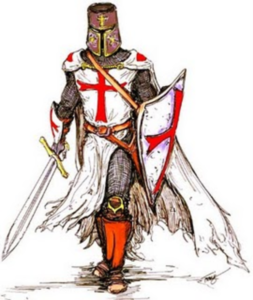 The word knight always makes me think of medieval men in full armor fighting with shields and swords, and maybe that isn’t so far off with the Knights Templar. One thing I didn’t connect to the knights, was Christianity, but maybe I should have. The medieval knights are a little outside my wheelhouse, but I have had an interest in them for a while now, and the Knights Templar are at the top of my list. So, I decided to have a look at exactly what they are, beginning with the Knights Templar.
The word knight always makes me think of medieval men in full armor fighting with shields and swords, and maybe that isn’t so far off with the Knights Templar. One thing I didn’t connect to the knights, was Christianity, but maybe I should have. The medieval knights are a little outside my wheelhouse, but I have had an interest in them for a while now, and the Knights Templar are at the top of my list. So, I decided to have a look at exactly what they are, beginning with the Knights Templar.
After Christian armies captured Jerusalem from Muslim control in 1099 during the Crusades, groups of pilgrims from across Western Europe started visiting the Holy Land. As they traveled, many of them were robbed and killed crossing through Muslim-controlled territories during their journey. A French knight named Hugues de Payens created a military order along with eight relatives and acquaintances, calling it the Poor Fellow-Soldiers of Christ and the Temple of Solomon. Later known simply as the Knights Templar (Knights of the Temple), it was founded in 1118 in Jerusalem, and was a large organization of devout Christians who carried out an important mission: to protect European travelers visiting sites in the Holy Land. The first headquarters of the Knights Templar was located on the site of the Temple of Solomon, and it was to this temple that the organization was dedicated and where it got its name.
Initially, the Knights Templar faced criticism from some religious leaders. There are always those who think the church and any kind of government or military group should not mix, but in 1129, the group received the formal endorsement of the Catholic Church and support from Bernard of Clairvaux, a prominent French abbot. Bernard authored “In Praise of the New Knighthood,” a text that supported the Knights Templar and bolstered their growth. In 1139, Pope Innocent II issued a Papal Bull that allowed the Knights Templar special rights. Among them, the Templars were exempt from paying taxes, permitted to build their own oratories and were held to no one’s authority except the Pope’s.
The Knights Templar quickly set up a network of banks and gained enormous financial influence, with an ability to quickly fund their work. Their banking system allowed religious pilgrims to deposit assets in their home countries and withdraw funds in the Holy Land. The order became known for its austere code of conduct (which included no pointy shoes and no kissing their mothers, rules outlined in “The Rule of the Templars”) and signature style of dress, which featured a white habit emblazoned with a simple red cross. Members swore an oath of poverty, chastity and obedience. They weren’t allowed to drink, gamble or swear. Prayer was essential to their daily life, and the Templars expressed particular adoration for the Virgin Mary.
New chapters of the Knights Templar were established throughout Western Europe as the group grew in size and status. At the height of their influence, the Templars had a sizable fleet of ships, and they owned the Mediterranean island of Cyprus. They served as a primary bank and lending institution to European monarchs and nobles. Though its original purpose was to protect Christiam pilgrims from danger, the Knights Templar later expanded its duties. They became defenders of the Crusader states in the Holy Land and were known as brave, highly skilled warriors. The group developed a reputation as fierce fighters during the Crusades. They were driven by religious zeal and forbidden from retreating unless significantly outnumbered, and I doubt if they would even then. The Templars built numerous castles. They fought, and often won, battles against Islamic armies. Their fearless style of fighting became a model for other military orders. They were quite the group.
 When I think of an island, exotic animals and birds everywhere. I might also think of snakes and other predators in the forests. It occurs to me that these things were not native to the area but were rather brought in by some ship. It makes perfect sense, because there is just no way these animals could migrate to an island. Still, there are animals on islands, like the Hawaiian Islands…in fact there are cattle herds on the Hawaiian Islands and a ranch called TIL Ranching. Maybe that shouldn’t surprise me, but it did.
When I think of an island, exotic animals and birds everywhere. I might also think of snakes and other predators in the forests. It occurs to me that these things were not native to the area but were rather brought in by some ship. It makes perfect sense, because there is just no way these animals could migrate to an island. Still, there are animals on islands, like the Hawaiian Islands…in fact there are cattle herds on the Hawaiian Islands and a ranch called TIL Ranching. Maybe that shouldn’t surprise me, but it did.
TIL Ranching was started when Captain George Vancouver brought cattle to the islands that were under the rule of King Pai’ea Kamehameha. I’m sure most people would think of Vancouver, Canada. Of course, it was named after Captain George Vancouver, a British naval officer, but that is not the only thing he ever did. In 1793, Vancouver gave King Kamehameha five cows from California. He followed that gift with the addition of bull calves. All of these gifts were presented in hopes of cultivating cattle on the Hawaiian Islands. Longhorn cattle from Mexico arrived soon after, and Kamehameha issued Kapu to protect the animals. Kapu refers to the ancient Hawaiian code of conduct of laws and regulations. The Kapu system was universal in lifestyle, gender roles, politics, religion, etc. An offense that was Kapu was often a corporal offense, but also often denoted a threat to spiritual power, or theft of mana. Kapus were strictly enforced. In this case, the Kapu was that the cattle were not to be killed for food. The  reason was that if the herd was going to thrive, they would need a few years without being butchered, so the herd could grow. When you think about it, that was an amazing gift.
reason was that if the herd was going to thrive, they would need a few years without being butchered, so the herd could grow. When you think about it, that was an amazing gift.
Over the next few decades, there were cattle throughout the Hawaiian Islands. When the herds began to flourish, the Kapu was lifted, and products from the animals became important resources for islanders. When John Palmer Parker married the king’s granddaughter in 1816, he benefited from the increase of cattle, by receiving land and exclusive hunting rights from King Kamehameha. By the 1860s, the cattle were fully domestication and formal ranching was widespread. It’s amazing that from a couple of small gifts, a whole new industry was born.

